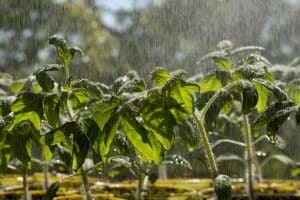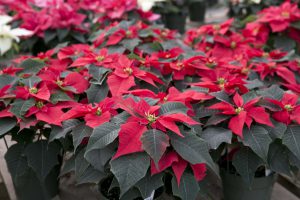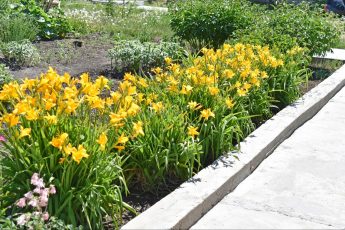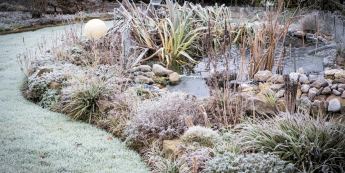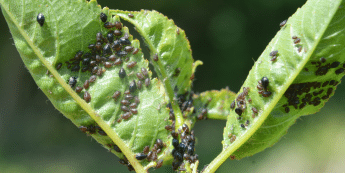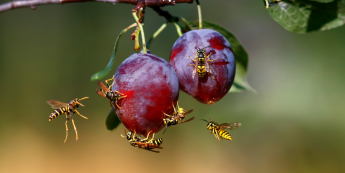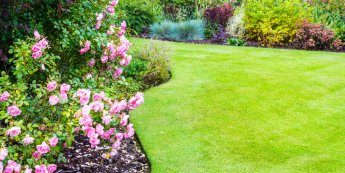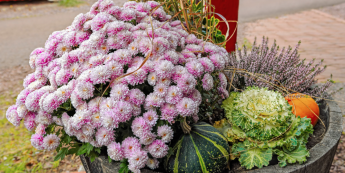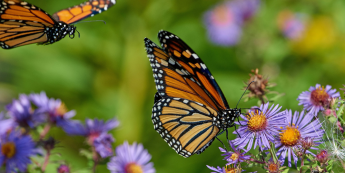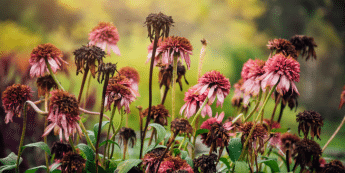Japanese Knotweed
by Rob Sproule
I don’t like scary Journalism. If I see a news report that tells me to stay tuned to find out what common household product might kill me, I change the channel. So I had a tough time deciding what tone to take with this, my article on the most frightening weed I’ve ever heard of in Alberta.
I’ve always known these weeds were out there, lurking on our borders like rats and zombies. I think of it sometimes when I’m addressing my millionth complaint about dandelions. Now the scary weeds are here.
What is it?
Fallopia japonica is commonly known as Japanese Knotweed, Fleeceflower, Monkeyweed, Japanese Bamboo and, in China, Tiger Stick. It’s called “itadori” in its native Japan, where its rugged natural environment (volcanic mountainsides) kept its growth in check.
In 1850, a European adventurer named Philipp von Siebold brought a beautiful new plant, plucked from a Japanese volcano), to Kew Gardens. It became the instant darling of UK gardeners and landscapers for its ease (nothing seemed to kill it), its speed (it grew rapidly to almost 5metres high), and its thick, attractive leaves.
The dense stands of bamboo-like foliage, along its lush white flowers found their way across the pond where it became instantly popular. Unfortunately, awareness in Canada was slow, with some Greenhouses only recently stopping its sale as an ornamental. It still finds its way into the odd plant swap; walk away if you ever see a plant called “False Bamboo” for sale.
Each underground growing end grows at up to 8cm a day, inspiring article titles like “The Plant that ate Britain.” In the UK it destroys housing foundations, invades through floorboards and grows through electrical sockets.
Pavement can’t stop it. The rhizomes can grow 3metres down and 20m across in their search for the tiniest sliver of light to grow towards. As of June 2015 it’s been spotted in every province except Manitoba and Saskatchewan, though it will inevitably reach them, too.
Spotting It
Spotting a knotweed patch is the easy part. The stalks grow straight up, achieving 3metres by early summer. As dense as bamboo, no other plants (or even small animals) can penetrate.
The shoots will be fleshy red when they first breakthrough the ground/ pavement/ brick wall, with leaves forming in a zig-zag pattern along the hollow, bamboo-like stem. The leaves are large and heart shaped, looking a little like a large lilac leaf.
Cream coloured flowers, growing vertically from the stem in clusters, appear in July before the plant dies back in the Fall, leaving brown stems behind.
Knotweed thrives in ditches and low-lying areas. It’s prevalence near waterways has led to real concerns in B.C. about clogged rivers and choked spawning grounds.
Getting Rid of It
This isn’t an aesthetic problem like dandelions. With a weed this virulent, eradication becomes about protecting crops and property values.
Unfortunately, control is very difficult. England spends an estimated $166 million pounds a year on control but there’s still not one 1,500 hectare patch of ground in the entire UK that doesn’t have at least one knot weed.
As much as you want to rip it out, do not disturb the ground. In David Bay, B.C., crews excavated an infested park to 3metres down. The next summer the knotweed not only returned, but doubled in size. Digging it out only breaks up rhizomes, creating more growing ends and enabling the beast to make its subterranean net ever denser.
If you think you spot it on your property, call your municipality right away. In Edmonton the number to call is 4-1-1. Their experts will want to know and, believe me, you will want their expertise.
The best control is chemical. Glyphosphate (usually sold as “Round-Up”) needs to be applied to every leaf during its blooming stage. With the density of the clusters the plant forms, you’ll need to wade into them to ensure coverage.
They’re stubborn, and it will probably take about 5 years to kill them. Stick with it, because right now that’s the only option if you have it. England has imported a Knotweed eating bug as a predator, in the hopes of introducing a biological control.
The Bright Side
This January, when you’re cursing our extreme climate as the mercury plunges off the thermometer, remember that our extreme cold may be our saving grace. While Knotweed rhizomes can survive -35 C, our frigid winters may help slow it down.
No matter how invasive the weed, it takes time for it to become established enough to become a major problem. Like many problems that compound with time, Knotweed is most fragile when it’s just beginning to get established. Learning how to identify it, so that you can spot and eradicate it quickly, is the first crucial step to control.


